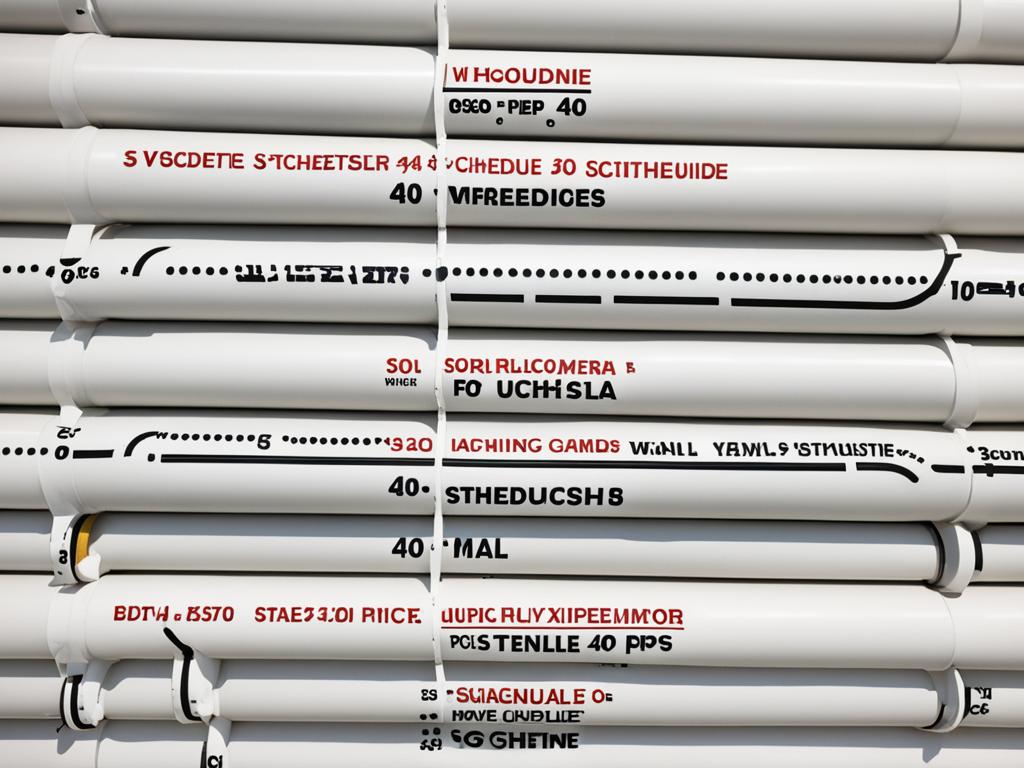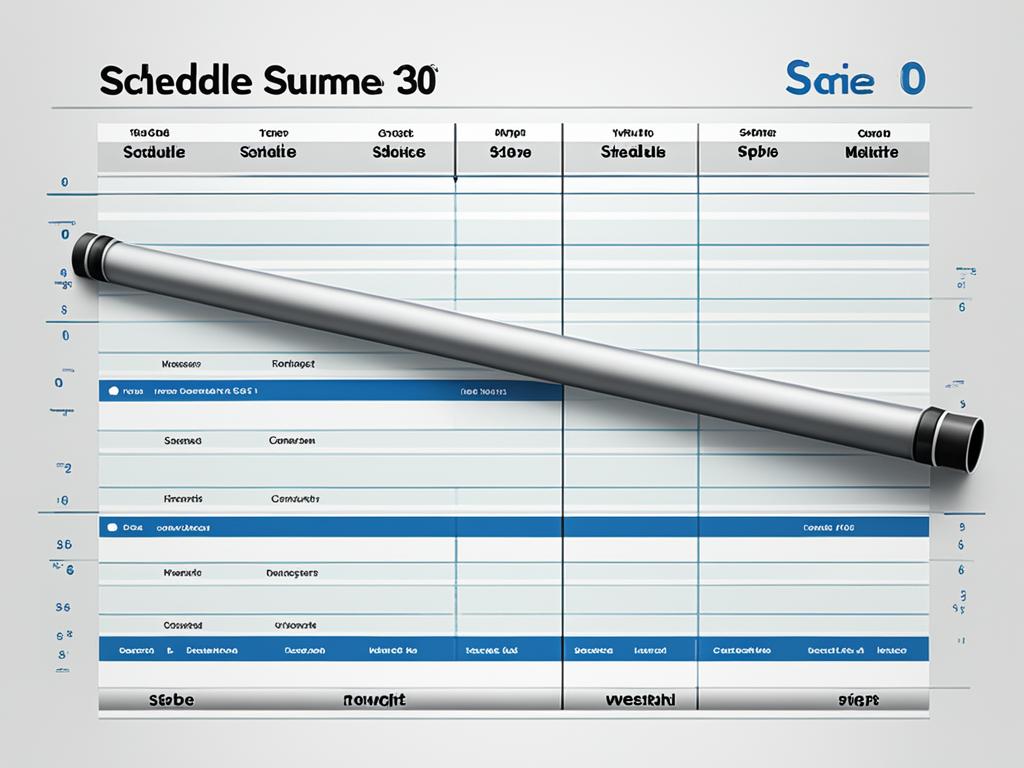When it comes to PVC pipe, understanding the differences between schedule 30 and schedule 40 is essential. These two classifications refer to the wall thickness of the pipe and have important implications for various applications. In this article, we will explore the disparities between schedule 30 and schedule 40, examining factors such as strength, wall thickness, pressure rating, dimensions, and pipe fittings.
Key Takeaways:
- Schedule 40 PVC pipe is stronger and more rigid due to its greater wall thickness.
- Schedule 30 PVC pipe is lighter and more flexible, making it suitable for non-pressure applications.
- Schedule 40 PVC pipe has a higher pressure rating than schedule 30.
- Dimensions of schedule 30 and schedule 40 PVC pipes may vary, with schedule 30 generally having a smaller inside diameter.
- Appropriate pipe fittings should be used based on the chosen schedule of PVC pipe.
Strength and Wall Thickness Comparison
When comparing schedule 30 and schedule 40 PVC pipes, it is essential to consider their strength and wall thickness. The wall thickness plays a crucial role in determining the durability, rigidity, and pressure handling capabilities of PVC pipes.
Schedule 40 PVC pipe, with its thicker wall, is inherently stronger and more rigid compared to schedule 30 PVC pipe. This increased wall thickness provides greater resistance against bending and deformation, making it suitable for applications that require enhanced strength and durability.
In contrast, schedule 30 PVC pipe has a thinner wall, resulting in a lighter weight and more flexible pipe. While schedule 30 may be suitable for non-pressure applications and installations that prioritize flexibility, it may not be adequate for projects that demand higher strength and pressure resistance.
Here is a comparison between schedule 30 and schedule 40 PVC pipes regarding their strength and wall thickness:
| Schedule | Wall Thickness | Strength |
|---|---|---|
| Schedule 30 | Thinner wall | Lighter weight, more flexible |
| Schedule 40 | Thicker wall | Stronger, more rigid |
It is important to select the appropriate schedule of PVC pipe based on the specific requirements of your project. If you need a pipe that can handle higher pressure ratings and offers increased structural integrity, schedule 40 is recommended. However, if flexibility and lighter weight are your top priorities, schedule 30 may be more suitable.
Remember, the choice between schedule 30 and schedule 40 PVC pipes depends on the specific needs of your application. By considering the strength and wall thickness, you can make an informed decision and ensure optimal performance and longevity for your PVC pipe installation.

Pressure Rating and Dimensions
When comparing schedule 30 and schedule 40 PVC pipes, it’s important to consider the differences in pressure rating and dimensions. Schedule 40 PVC pipe has a higher pressure rating compared to schedule 30, making it ideal for applications that require greater pressure resistance. This means that schedule 40 PVC pipe can handle higher levels of internal pressure without compromising its structural integrity.
Furthermore, the dimensions of schedule 30 and schedule 40 PVC pipes may vary. Schedule 30 PVC pipe typically has a smaller inside diameter compared to schedule 40. The smaller diameter of schedule 30 PVC pipe can affect the flow rate, capacity, and overall performance of the pipe in certain applications. It’s crucial to carefully assess the specific requirements of your project to ensure you select the PVC pipe with the appropriate dimensions.
In addition to considering pressure rating and dimensions, it’s essential to use the correct pipe fittings with the chosen schedule of PVC pipe. Proper installation and compatibility depend on using pipe fittings specifically designed for the schedule of the PVC pipe being employed. Using the wrong pipe fittings can lead to leaks, pipe damage, and compromised performance. Ensure that the pipe fittings you choose are compatible with either schedule 30 or schedule 40 PVC pipes to guarantee a secure and reliable installation.
